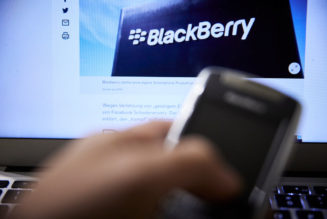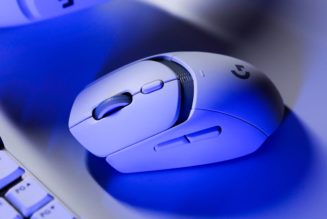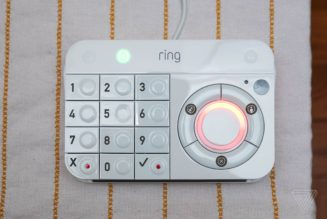Leap Motion debuted in June 2012 with an impressively polished demo, but after its attention-getting debut, the company’s path to market got quite a bit rockier. It had to woo partners on both the software and hardware side, while navigating an often unpredictable production process and at least one major delay.
Despite attracting big-name partners like Best Buy, Asus, and Corel, it wasn’t enough to convince users to sign on for a new way of controlling their computers in significant numbers.
However, in 2019 a merger turned the company into Ultraleap, and in 2023 it’s returning with the Leap Motion Controller 2. The Motion Controller 2 is a $139.99 device scheduled to start shipping this summer that’s 30 percent smaller than the original, despite including higher resolution cameras and an increased field of view for gesture control interaction with digital objects.
-
Ten years later, here’s the second-generation Leap gesture controller.
The original $80 Leap gesture controller debuted so long ago that we compared it to the Kinect. However, unlike Microsoft’s Xbox accessory, Leap is still kicking.
Now known as Ultraleap after a 2019 merger, it’s showing off the Leap Motion Control 2 (via RoadtoVR) and retiring the old device. The new $139 unit will begin shipping this summer, and new Gemini software for it is coming to macOS — and with its positioning as a VR accessory, you can probably guess why that’s suddenly a priority.
Key improvements over the original Leap Motion Controller include higher resolution cameras, an increased field of view, and 25% lower power consumption, all in a 30% smaller package for optimum placement and convenience.
It is the most flexible camera ever developed by Ultraleap and is compatible across platforms and complimentary hardware including VR/MR/AR headsets, PCs, and holographic displays.
-


Leap Motion, which made hand-tracking systems for virtual and augmented reality headsets, is reportedly being acquired by haptics company UltraHaptics. The Wall Street Journal reported the news earlier today, saying that the San Francisco-based Leap Motion had agreed to sell for around $30 million.
That’s a fraction of Leap Motion’s $306 million valuation at the peak of its hype in 2013. But it’s similar to a figure that Apple supposedly discussed during a never-completed acquisition last year. The Journal reports that UltraHaptics will get Leap Motion’s patents and hire most of its staff, with the exception of CEO and co-founder Michael Buckwald, who will reportedly leave the company.
-


Gesture interface company Leap Motion is announcing an ambitious, but still very early, plan for an augmented reality platform based on its hand tracking system. The system is called Project North Star, and it includes a design for a headset that Leap Motion claims costs less than $100 at large-scale production. The headset would be equipped with a Leap Motion sensor, so users could precisely manipulate objects with their hands — something the company has previously offered for desktop and VR displays.
Project North Star isn’t a new consumer headset, nor will Leap Motion be selling a version to developers at this point. Instead, the company is releasing the necessary hardware specifications and software under an open source license next week. “We hope that these designs will inspire a new generation of experimental AR systems that will shift the conversation from what an AR system should look like, to what an AR experience should feel like,” the company writes.
-


Qualcomm is launching an accelerator program for VR headset manufacturers, releasing a new headset reference design, and partnering with hand tracking company Leap Motion. The company is looking to kickstart production of headsets with features not found in the Oculus Rift or HTC Vive, including an all-in-one wireless design that removes the need for wires or external tracking devices. This continues a mission it first announced last year, but with updated hardware and a goal of making it easier to build off Qualcomm’s work.
The virtual reality development kit, as Qualcomm calls it, is a self-contained design built on the company’s Snapdragon 835 chip. It has a 2560 x 1440 screen (equivalent to the Gear VR), 4GB of RAM, and 64GB of flash memory. There are also cameras both inside and outside the headset. On the inside, they enable eye tracking, a sometimes-gimmicky feature that can also make it easier to push high-quality graphics inside a headset. On the outside, they allow for inside-out (or “six degree of freedom”) tracking, which means people can experience moving around in VR without needing a specially assembled “VR room.” The deal with Leap Motion, probably the most advanced independent hand tracking company, also puts an exciting new interface on the table.
-


If you’ve ever used the Leap Motion hand tracker, you’ll know that it’s a magical experience punctuated by moments so frustrating it makes you want to throw things — except that you can’t pick them up, which is why you’re frustrated in the first place. Leap Motion is well aware of this problem, and the company has just announced a beta of what it calls the Interaction Engine, which is meant to fix it.
The Interaction Engine is an add-on for the larger Unity game engine, which supports just about any VR headset. It modifies the default physics rules to create more natural interactions with players’ in-game hands, including touching, picking up, and throwing objects. On a very broad level, objects without the Interaction Engine want to bounce away from each other when they collide, even if that collision is between your virtual fingers and the item they’re trying to grab. With the Interaction Engine, they’ll theoretically stick to your hand better, and you’ll be able to do things like stack them more easily. There are also custom physics settings for throwing items, and if you try to push objects in a direction they can’t move — like against the floor — they’ll phase through your hands, instead of trying to (as Leap Motion puts it) “violently escape.”
-


When Leap Motion was announced in 2012, it seemed like a solution looking for a problem. A little black box that plugged into a computer, it could recognize hand gestures and translate them into interface commands — to let you “do things on your computer just like you do them in real life.” But the company was trying to sell people on something they’d never asked for, for use with a machine they’d already been interacting with for years.
Then came virtual reality. When people first started using headsets like the Oculus Rift, the mouse and keyboard suddenly became inadequate: they were tough to find while effectively blindfolded, and they didn’t take advantage of VR’s unique feeling of 3D space. Suddenly, tools like Leap Motion started to make a lot more sense.
-

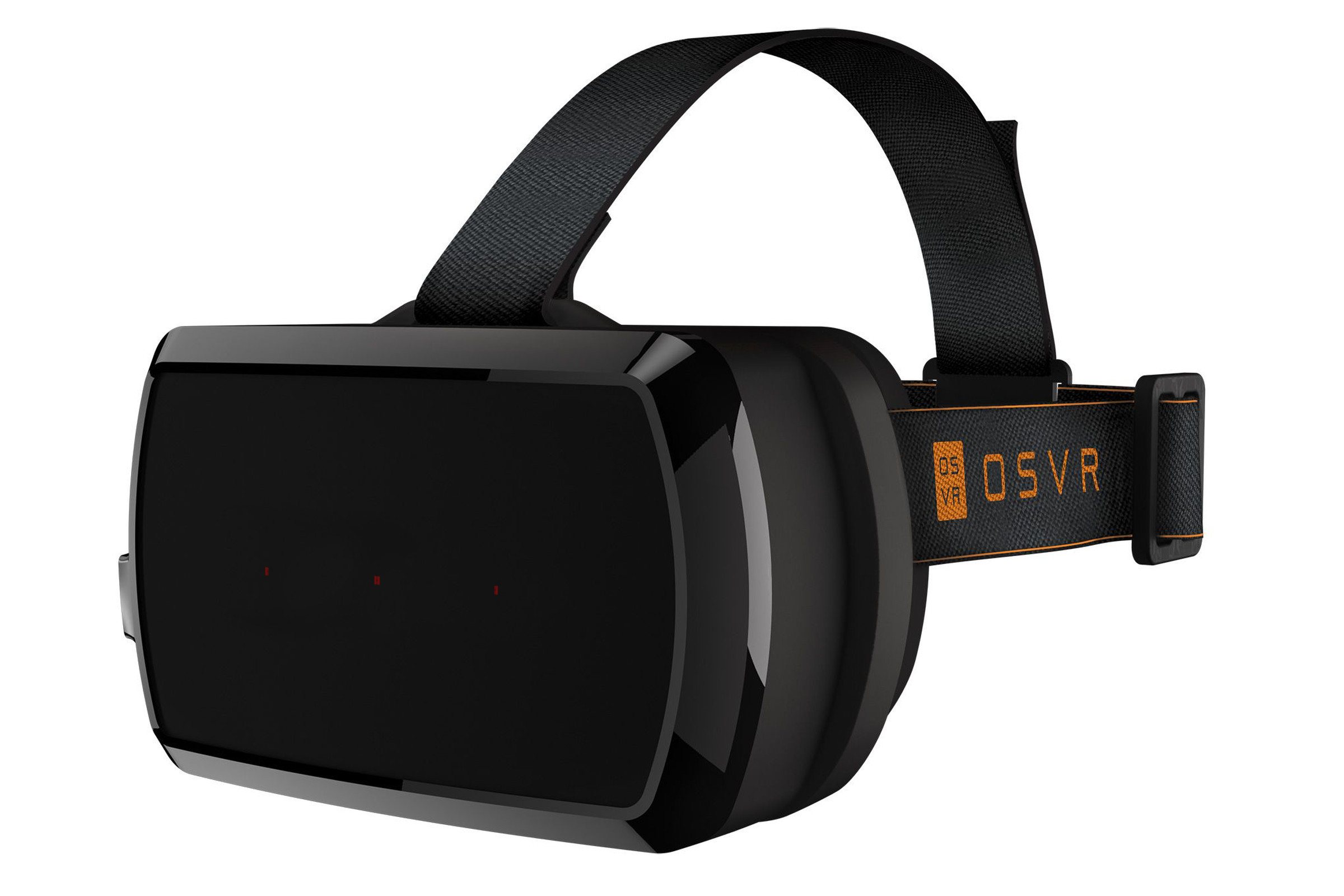
A high-profile VR headset is about to get its own motion control setup — and no, it’s not the Oculus Rift. Today, Leap Motion announced that it would be adding its hand-tracking technology to the OSVR Hacker Development Kit, a piece of open source hardware that will be released this summer. The Leap Motion, originally released as a non-VR gesture interface, has become one of the most common virtual reality controllers. OSVR is a partnership between various VR and gaming companies, but it’s better known for its headset, a rougher, cheaper, and more modular alternative to the Oculus Rift development kit.
OSVR will begin taking pre-orders in May, with the headsets shipping in June. Now, though, it will offer an optional Leap Motion faceplate that snaps across the front. This is fundamentally a more sophisticated version of a mount that Leap Motion released last year — one that’s been smoothed out and redesigned for a single product. We don’t know how much it will cost, but the OSVR headset will sell for $199, and a standalone Leap Motion is currently $79 (plus another $19 for a mount.)
-

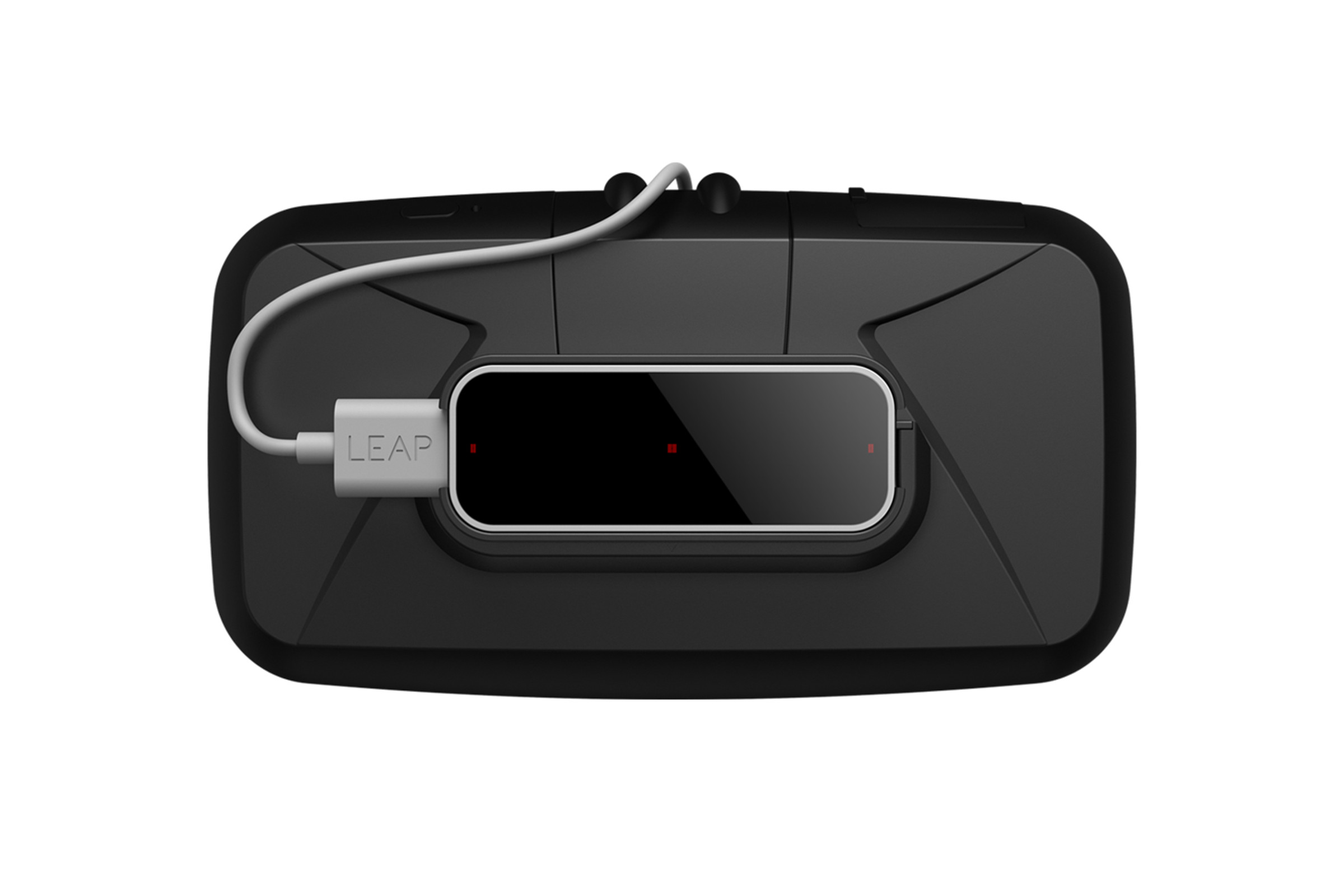
One of the best features of VR headsets also happens to be one of its greatest shortcomings. Headsets are designed so that you can’t see anything else, making games incredibly immersive. Yet it also means that interacting with the real world requires removing it from your head. Not doing so brings the risk of knocking things over, including yourself. San Francisco-based Leap Motion has come up with a solution: you attach its $79.99 infrared camera sensor to the front of your headset, and use software to display live video of the real world right in the mask. Even better, you can do it without fully leaving whatever game or virtual experience you’re in, opening the door to new augmented realities.
-


If you’ve been looking to play around with Leap Motion’s innovative gesture control technology on your Windows PC but you hate the idea of plugging in a dongle, you’ll be glad to hear that HP has decided to start directly selling its keyboard with the technology built in. Leap Motion representatives at the Computex trade show reportedly tell Engadget that the keyboard will go on sale this month for $99, which puts it at $25 more than the dongle itself. That will probably be a hard sell, especially since — in our testing — Leap remains a novelty, not a tool. But it’s a significant move for Leap, as it gives the company another way to get its motion controls into homes. Previously, the keyboard was only available with select HP desktops. HP also sells a laptop with the technology built in.
-

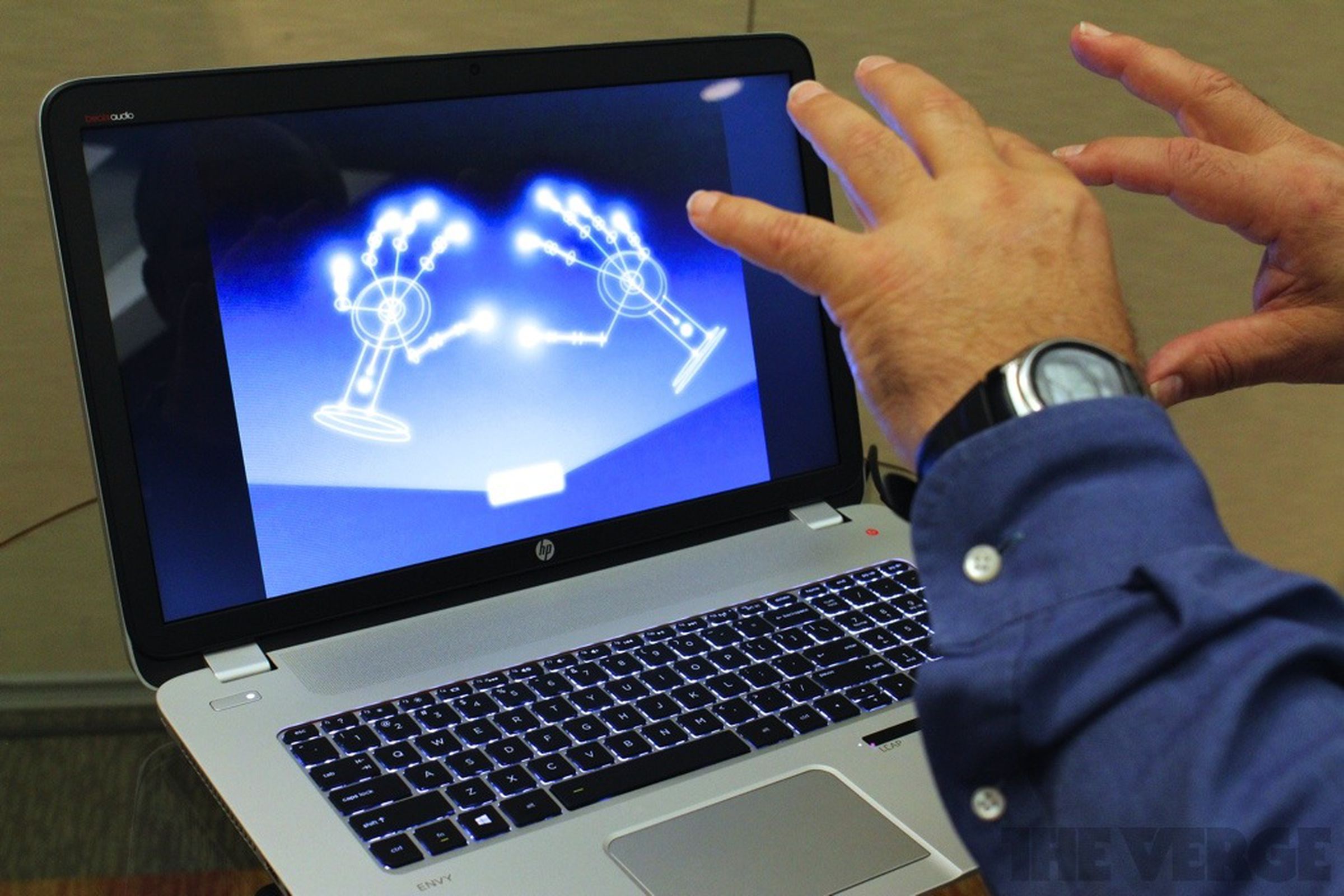
Touchscreens are now fairly standard in Windows 8 notebooks, but HP’s new Envy 17 Leap Motion SE has integrated yet another type of input: touchless. The Envy has Leap Motion’s gesture recognition technology built directly into the palmrest, allowing users to move seamlessly between the touchpad, touchscreen, and 3D gesture control.
This integration is powered by a new Leap Motion microsensor that’s 70 percent smaller than the standalone peripheral. The new module is specifically designed to be embedded into various devices, which could allow the company to grow larger than it would as just a USB accessory manufacturer.


I got my first look at the Leap Motion Controller in an outdoor tent adjacent to the South by Southwest convention center months before it arrived on my desk. I found an empty computer and played a quick round of a Jenga-like game called Block54, hovering my thumb and forefinger over a gum pack-sized device to pinch and remove pieces. I found it incredibly difficult.
I played a lot more Block54 this past weekend in anticipation of the Leap Motion Controller’s official launch today. This time, I was in the privacy of my own home instead of being surrounded by gawking strangers eager for their turn at the machine. I grew significantly better than my initial attempts in Austin, Texas, but I still struggled the entire time. Finding the right depth and height took practice, but wasn’t too much of a problem after a few rounds.


About a year after Leap Motion’s “Kinect on steroids” controller made its debut, Leap’s Airspace app store has finally moved into beta testing. Access to Airspace will be available on both the Mac and PC, and is limited to the 12,000 or so developers who currently own a Leap controller. As of today, there are about 50 apps in the storefront. But by the time the Leap controller and Airspace formally launch to the public on July 22nd, the store will have about 100 apps to choose from.
Monday’s beta launch is rolling out to developers slowly, and those with access will be notified via email, said Elliotte Bowerman, a Leap spokeswoman. The Airspace beta will also introduce operating-system level controls for OS X, Windows 7 and Windows 8, which will allow anyone with a Leap controller to use the device to navigate around either OS as they would with a mouse or trackpad — we’ve seen demos of this in the past. We were also able to test out Airspace and this OS-level control last week at Leap’s San Francisco offices and it all worked well on both an iMac and an Asus Window 8 desktop. Since Windows 8 is an OS built to be used completely with a touch screen, using gesture control on a Leap device felt mostly natural since the swipes and taps are all the same, just performed in the air rather than hand-to-display contact.

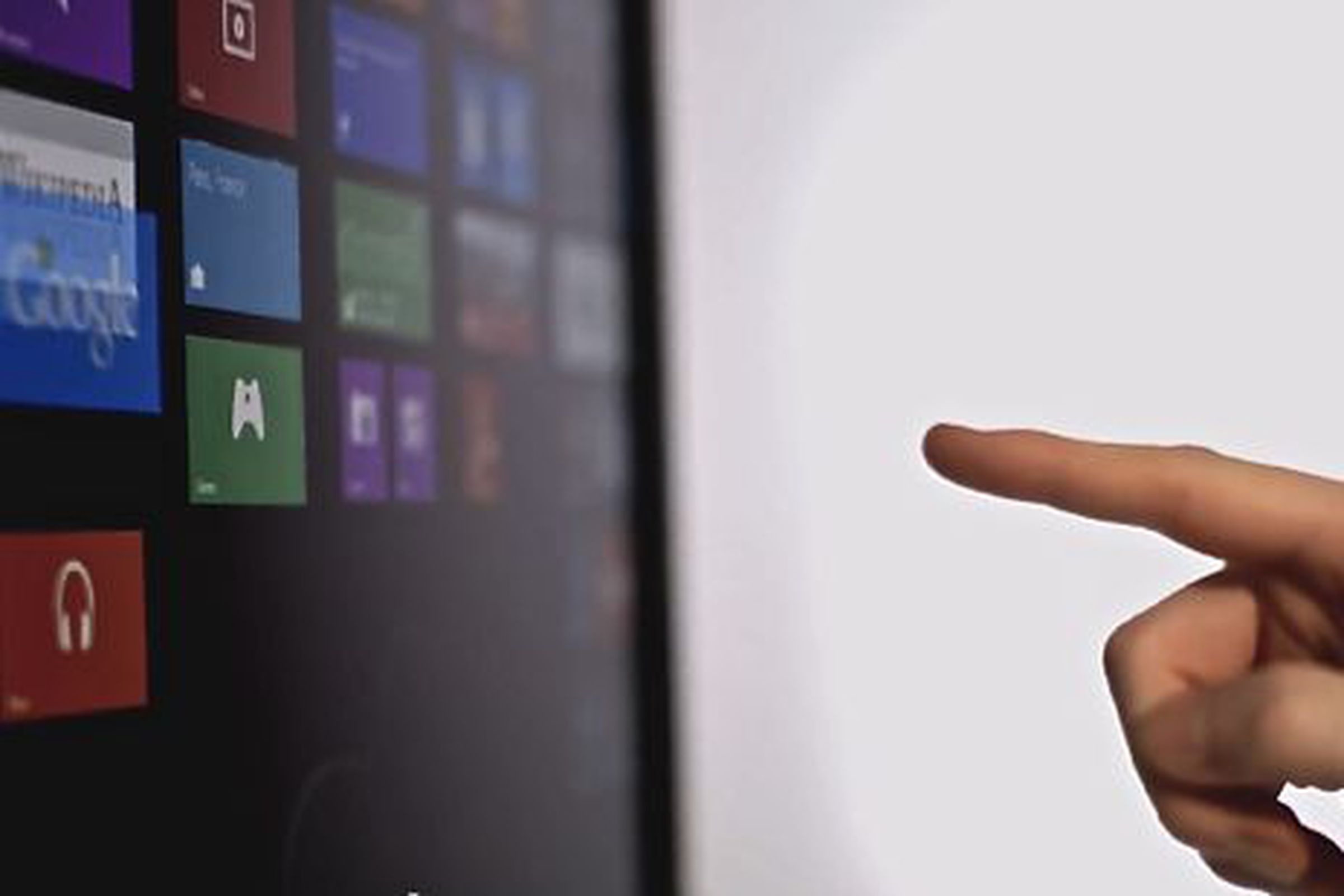
Leap Motion revealed a new video today showing off the device’s gesture control capabilities with Windows 7 and 8. When plugged into a Windows OS device, the Leap Motion will support full multitouch gestures out of the box, allowing users to click, drag, scroll, swipe and rotate screens entirely with gestural input. Leap Motion’s previous demos focused on native apps and building out the device’s Airspace app store, but the latest news confirms that the device will also be useful for OS-level navigation. The company will enter its recently announced beta testing round next month, before the product’s final release on July 22nd.

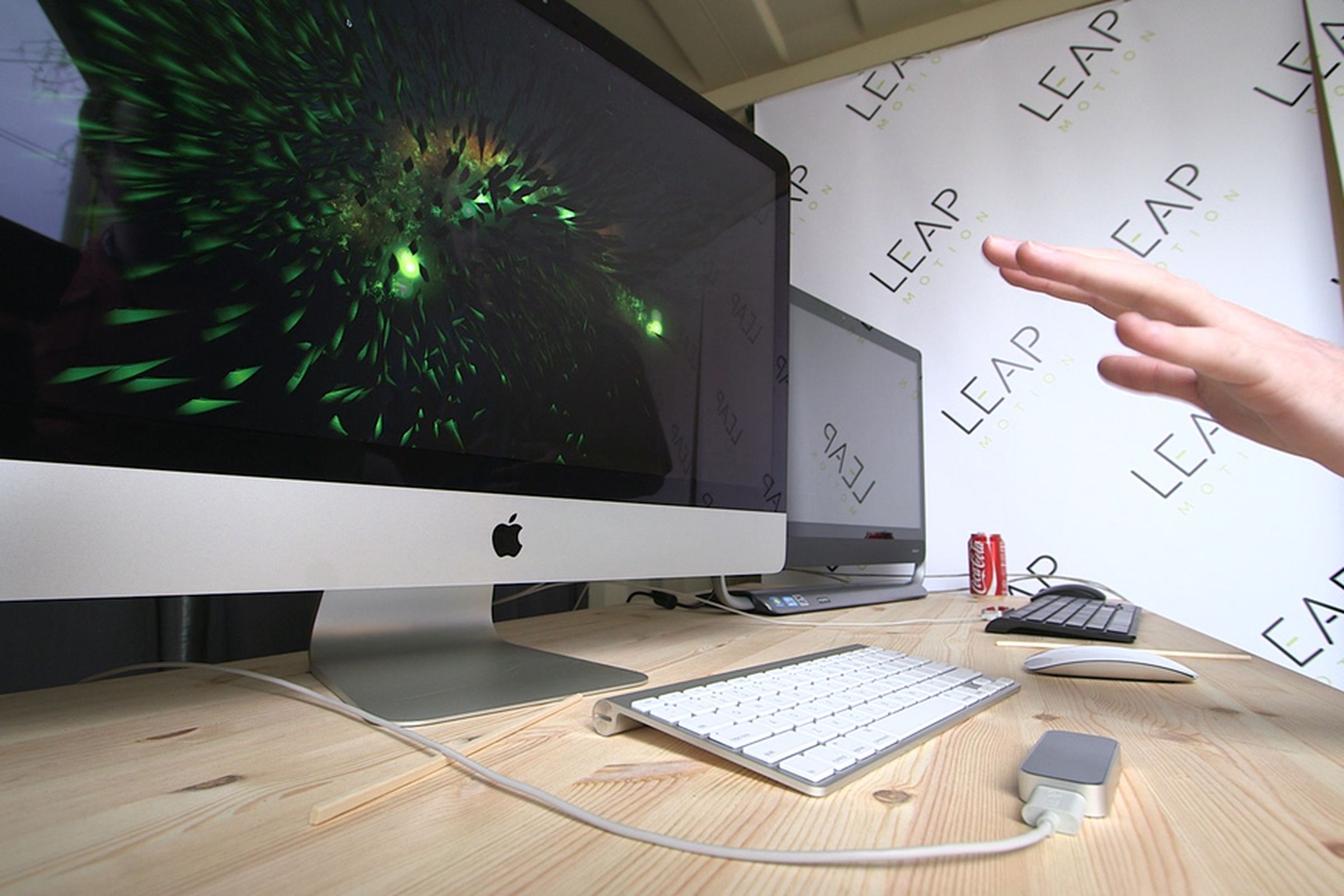
The latest update to Google Earth is offering something unexpected: gesture control. Google announced today that the latest desktop version of Earth will include native support for Leap Motion’s gesture control device, shipping next month. The demo below shows how it will work, using Leap’s API to enable hands-free control of basic spatial commands like zooming and spinning. According to a Leap Motion representative, the Google Earth team received a developer unit when they shipped earlier this year, and more developed the necessary code to use the Leap directly. Google Earth joins a slate of already-announced software for Leap Motion, including games from Tim Shafer and Disney, as well as professional software from Autodesk and Corel.


Leap Motion announced today that it’s partnering with Hewlett Packard to release the first line of built-in gesture controlled computers. The companies declined to say whether the models would be laptops or desktops, or pin down an exact release date, except to say the computers would be the first models hitting the market with gesture devices embedded directly in the computer shell. It’s a good sign, as Leap Motion rushes towards its official release date on May 13th and tries to build enough interest in its app store to keep both developers and users happy.


“Just for you guys today we’re going to do something special, something that’s never been done before” said Victor Luo, NASA human interface engineer. “We’re going to drive this robot, on stage at GDC, with a Leap Motion device.”
In an unexpected demonstration at the 2013 Game Developers Conference in San Francisco, scientists from NASA used the Leap Motion to control a six-legged, one-ton Athlete rover located at the space agency’s Jet Propulsion Lab in Pasadena, California. Using his hands in front of a Vaio laptop on stage, Luo raised one of the Athlete’s legs as the crowd at the Moscone Center watched along via a live Google+ Hangout. And while this demonstration was impressive in its own right, NASA’s ambitions reach much further than the 383 miles to Pasadena.

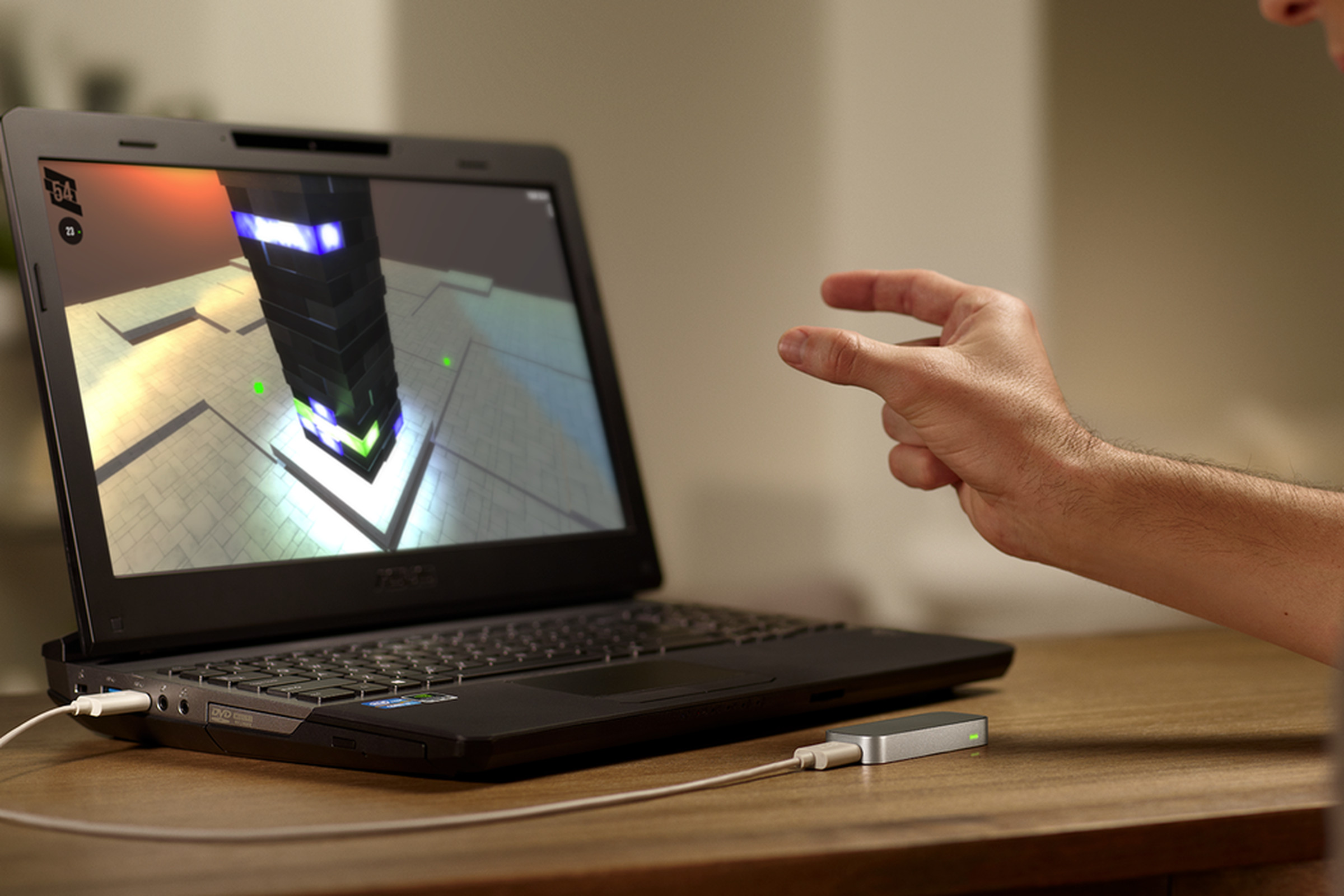
The Leap Motion is less than three months away. The motion-tracking company announced today that its “Kinect on steroids” motion controller will begin shipping from Leapmotion.com on May 13th (prioritized by pre-order date), and be available six days later from Best Buy. The launch price will be $79.99 plus shipping, a ten-dollar jump from the introductory pre-order price.


Minimalist to-do app Clear for Mac will soon support the Leap Motion 3D gesture controller, Realmac announced today on its blog. Actions like completing to-do’s, switching between lists, and scrolling through items will require only a flickr of the wrist — and the $69.99 Leap motion-tracking controller, of course, which is projected to ship within the next month or so. The Leap is remarkably accurate, Leap Motion CTO David Holz told us back in June, tracking your hands down to the hundredth of a millimeter.
“The guys at Leap have been continually adding to the SDK… We actually built our own tools to teach Clear the gestures it should recognize, and each release of the SDK adds APIs that replace the things we’ve been bootstrapping,” Realmac’s Nik Fletcher says. “The end result means that we’re building on top of the Leap’s own gesture recognition and ensure we’re offering a really effortless, consistent experience.” While waving your hands in mid-air is hardly an efficient way to get through your to-do list, integration with Clear is notable since it’s one of the first popular apps to leverage the Leap Motion SDK for consumer use.

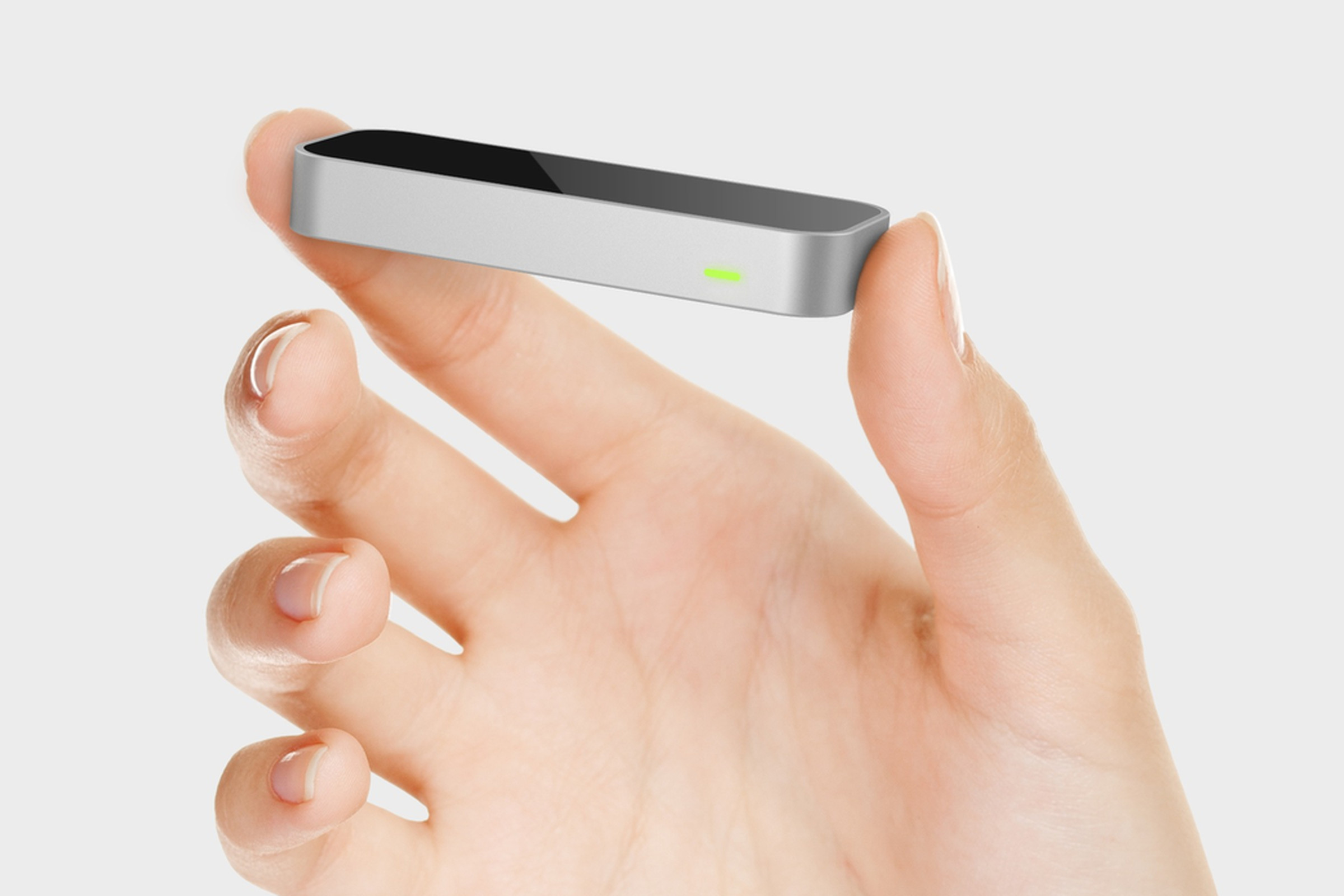
Leap Motion’s gesture control system is currently on pre-order, but when it launches, it will do so through a retail partnership with Best Buy. The company has announced an exclusive US partnership to sell through Best Buy’s stores and site, and it will begin taking pre-orders through BestBuy.com in February — it’ll continue accepting them through its own site as well, especially for non-US customers. The $69.99 device will then ship later in the quarter; CEO Michael Buckwald has previously told us its first official production run could number hundreds of thousands or even millions of units.
Leap Motion has already announced a partnership with Asus to ship bundled with PCs, but this means it’ll show up in stores as well, something the company says will help give it a “massive consumer audience.” Best Buy, meanwhile, gets exclusive retail rights for one of the most interesting new device makers, a good sign for a struggling retail company. Leap may have other manufacturer partnerships on the table as well, so we could see it bundled with even more products by the time it’s released, in addition to these retail sales.


After unveiling its Kinect-like gesture control system for PCs in mid-2012, Leap Motion is a promising product that’s not available to buy just yet, but that’s set to change this year. This morning, Leap Motion announced a new partnership with Asus, which will see it bundle its motion control technology with select notebooks and desktops shipping later this year, including the All-in-One PCs and high-end notebooks.
Leap Motion is still making motion control units for you to pre-order — but as of today, there’s a new way for you to buy one bundled with a laptop, and down the road, maybe with a tablet or a smartphone too. The Leap Motion app store will also come pre-installed on any computer with a module, and since Asus will be shipping internationally, it also marks Leap’s unofficial international debut.

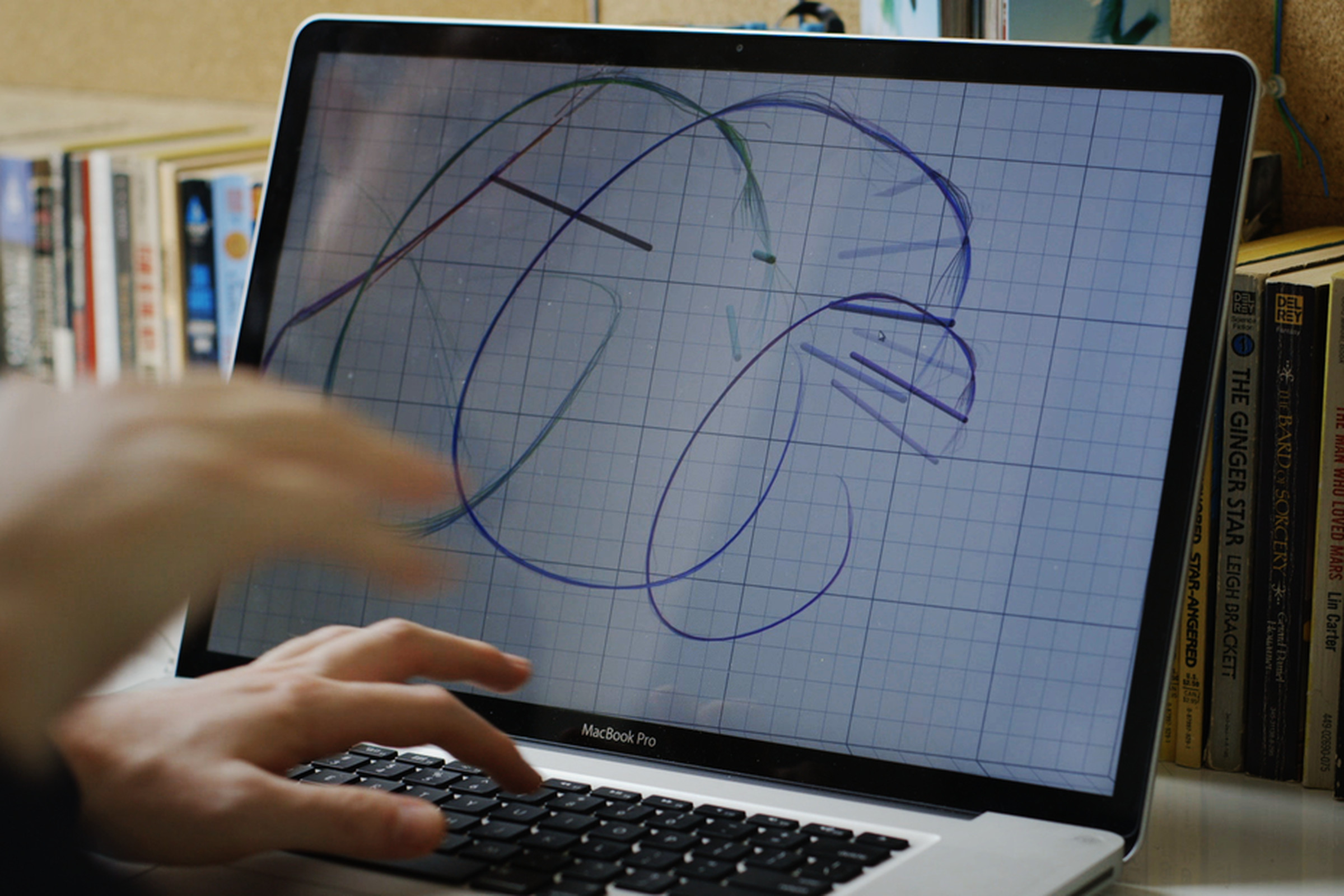
Leap Motion made a splash this summer with a futuristic motion-tracking camera, but they’ve spent the rest of the year on a trickier task: leveraging that camera into a software platform. This morning, they made their biggest step forward yet, announcing another 10,000 units that will ship out to developers over the next few weeks and an updated SDK that provides developers with a codebase for basic gestures on the Leap.
The extra units increase Leap’s army of camera-equipped developers from 2,000 to 12,000 — an expensive move, but a necessary one if they’re going to have a fully stocked app store in time for their scheduled launch in early 2013. Aside from a few in-house programs, all of the software will be coming from those 12,000 outside devs. CEO Michael Buckwald told The Verge, “Our thinking is that if we can lay a great framework and a great foundation by seeding the developer community with units, we can launch with an established base of great content.”

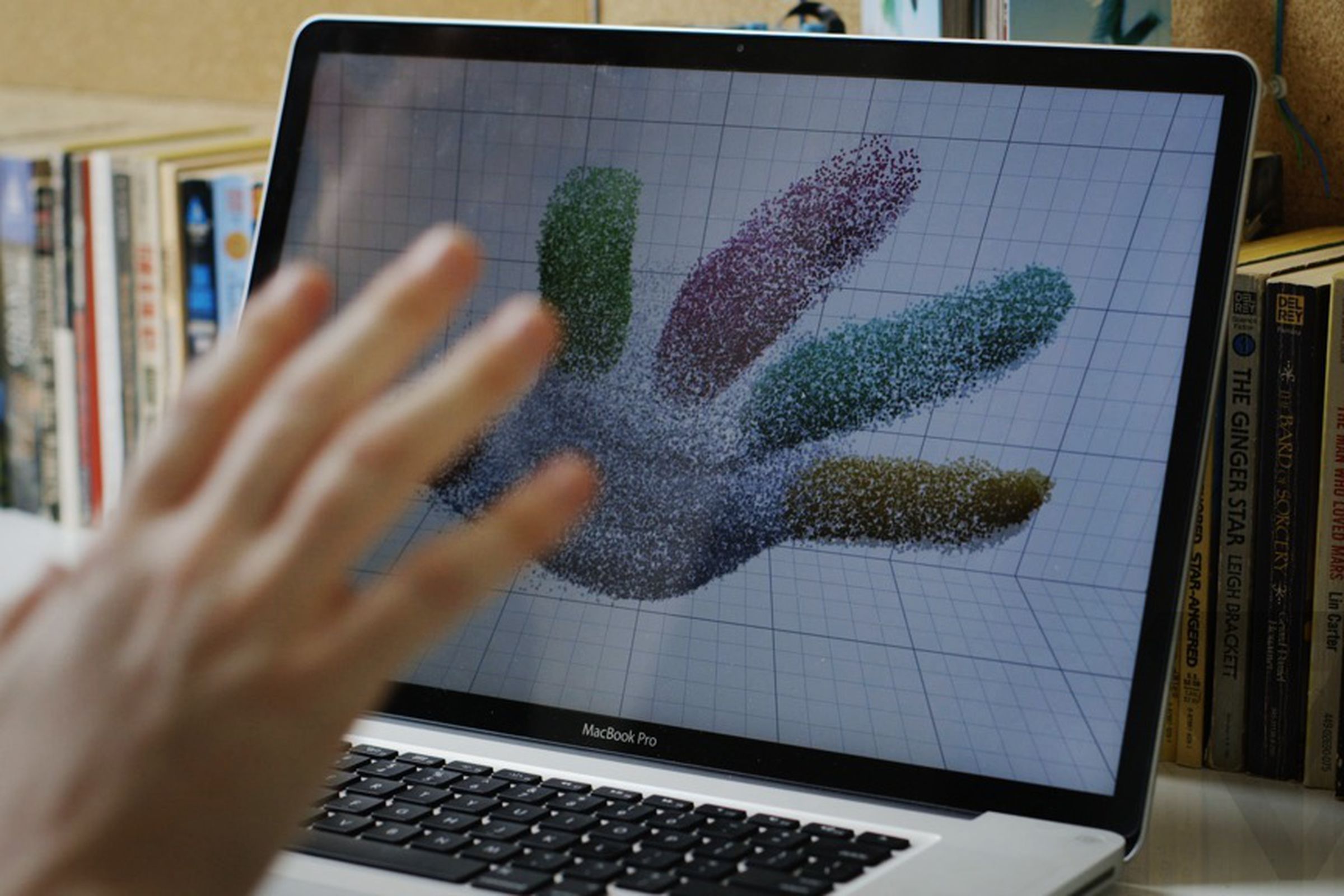
Leap Motion’s not the household name Kinect is, but it should be — the company’s motion-tracking system is more powerful, more accurate, smaller, cheaper, and just more impressive. Leap CTO David Holz came by the Verge’s New York offices to give us a demo of the company’s upcoming product (called The Leap), and suffice to say we’re only begrudgingly returning to our mice and keyboards.


Motion control startup Leap Motion has demoed its Leap 3D motion control system, which can track motion to around 0.01mm accuracy — 100 times more accurate than the Kinect. Rather than taking Microsoft’s approach, Leap Motion creates a personal 3D workspace of about four cubic feet. The Leap consists of a small USB device with industry-standard sensors and cameras that, in tandem with the company’s software, can track multiple objects and recognize gestures.
In a demo given to CNET, Leap’s designers showed off OS navigation and web browsing using a single finger, writing, pinch-to-zoom, precision drawing, 3D modeling, and gaming. From what we can see, it looks to be a very precise system, capable of recognizing objects in your hands and tracking them instead of your digits. Leap Motion is releasing an SDK and also handing out free sensors to “qualified developers” that want to develop for the system.
Login
Lost Password







